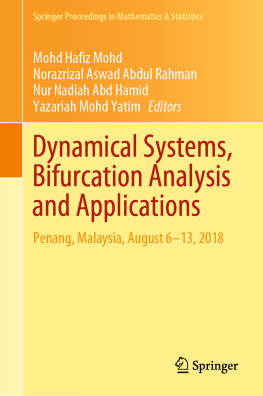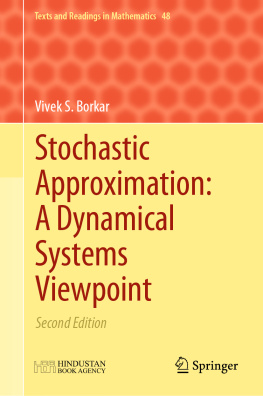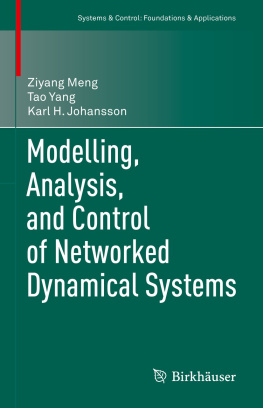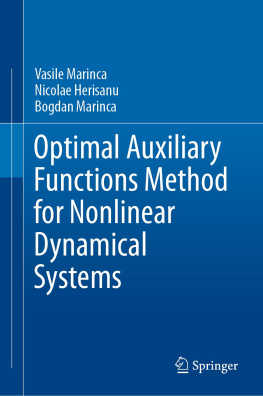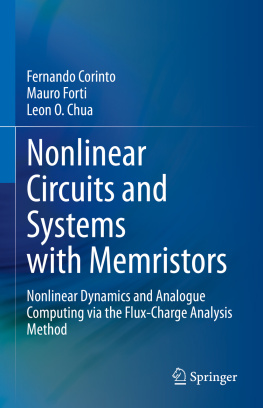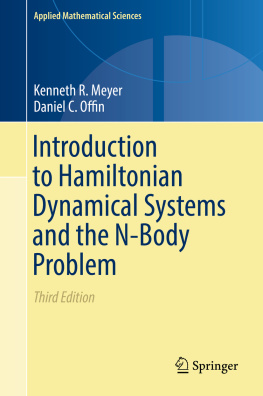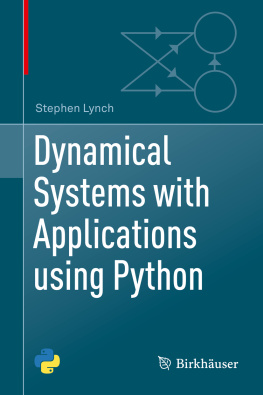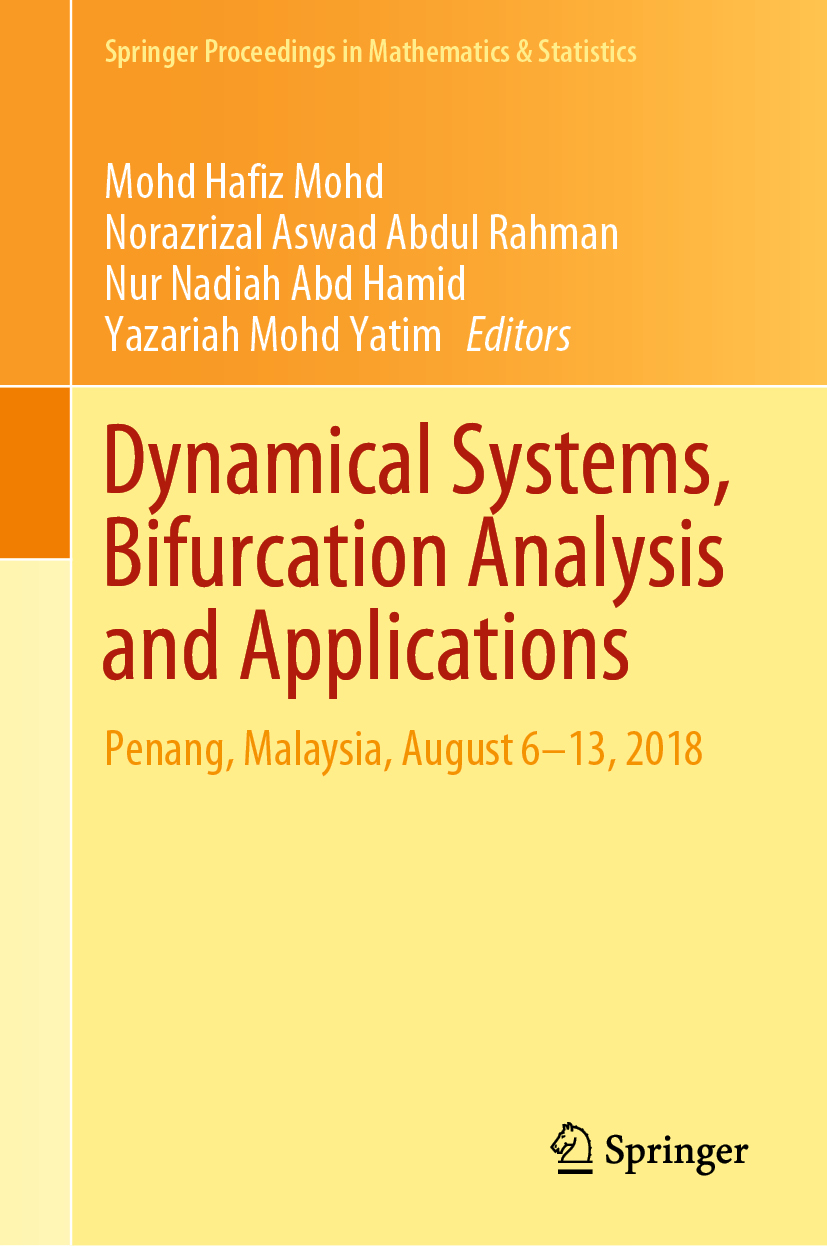Volume 295
Springer Proceedings in Mathematics & Statistics
Springer Proceedings in Mathematics & Statistics
This book series features volumes composed of selected contributions from workshops and conferences in all areas of current research in mathematics and statistics, including operation research and optimization. In addition to an overall evaluation of the interest, scientific quality, and timeliness of each proposal at the hands of the publisher, individual contributions are all refereed to the high quality standards of leading journals in the field. Thus, this series provides the research community with well-edited, authoritative reports on developments in the most exciting areas of mathematical and statistical research today.
More information about this series at http://www.springer.com/series/10533
Editors
Mohd Hafiz Mohd , Norazrizal Aswad Abdul Rahman , Nur Nadiah Abd Hamid and Yazariah Mohd Yatim
Dynamical Systems, Bifurcation Analysis and Applications
Penang, Malaysia, August 613, 2018
Editors
Mohd Hafiz Mohd
School of Mathematical Sciences, Universiti Sains Malaysia, USM, Penang, Malaysia
Norazrizal Aswad Abdul Rahman
School of Mathematical Sciences, Universiti Sains Malaysia, USM, Penang, Malaysia
Nur Nadiah Abd Hamid
School of Mathematical Sciences, Universiti Sains Malaysia, USM, Penang, Malaysia
Yazariah Mohd Yatim
School of Mathematical Sciences, Universiti Sains Malaysia, USM, Penang, Malaysia
ISSN 2194-1009 e-ISSN 2194-1017
Springer Proceedings in Mathematics & Statistics
ISBN 978-981-32-9831-6 e-ISBN 978-981-32-9832-3
https://doi.org/10.1007/978-981-32-9832-3
Mathematics Subject Classication (2010): 70G60 37H20 97M10 92B05 97N80
Springer Nature Singapore Pte Ltd. 2019
This work is subject to copyright. All rights are reserved by the Publisher, whether the whole or part of the material is concerned, specifically the rights of translation, reprinting, reuse of illustrations, recitation, broadcasting, reproduction on microfilms or in any other physical way, and transmission or information storage and retrieval, electronic adaptation, computer software, or by similar or dissimilar methodology now known or hereafter developed.
The use of general descriptive names, registered names, trademarks, service marks, etc. in this publication does not imply, even in the absence of a specific statement, that such names are exempt from the relevant protective laws and regulations and therefore free for general use.
The publisher, the authors and the editors are safe to assume that the advice and information in this book are believed to be true and accurate at the date of publication. Neither the publisher nor the authors or the editors give a warranty, expressed or implied, with respect to the material contained herein or for any errors or omissions that may have been made. The publisher remains neutral with regard to jurisdictional claims in published maps and institutional affiliations.
This Springer imprint is published by the registered company Springer Nature Singapore Pte Ltd.
The registered company address is: 152 Beach Road, #21-01/04 Gateway East, Singapore 189721, Singapore
Preface
This volume collects research papers and survey articles by participants and speakers in the SEAMS School on Dynamical Systems and Bifurcation Analysis (DySBA), which was held in Penang, Malaysia, from 6 to 13 August 2018. The event was organized by the School of Mathematical Sciences, Universiti Sains Malaysia (USM), under the auspices of the Southeast Asian Mathematical Society (SEAMS), Centre International de Mathmatiques Pures et Appliques (CIMPA) and Commission for Developing Countries (CDC) of the International Mathematical Union (IMU). The SEAMS School 2018 on DySBA was designed as part of a series of mathematics study programmes that aims to provide the opportunity for an advanced learning experience in the field of dynamical systems via planned lectures, contributed talks and hands-on workshops. It also aimed to introduce research-based learning for advanced undergraduate students, postgraduate students and young academics.
The main topics highlighted in SEAMS School 2018 on DySBA were differential equations and discrete dynamical systems with applications to mathematical biology. The event brought together both experts and novices in the theory and applications of dynamical systems and bifurcation analysis. The scientific objective of this school was to form a research network among ASEAN mathematicians to collaborate within the broader research community, as well as to open up new opportunities for researchers to link up and collaborate in these fields. The school also intended to foster a joint scientific collaboration between the School of Mathematical Sciences, USM and other international institutions. In general, this school was the first ever SEAMS school concerning dynamical systems and bifurcation theory in Malaysia. The successful organization of this event demonstrates the ability of the School of Mathematical Sciences, USM to participate actively in research engagement activities and scientific collaboration at the regional and international levels.
This edited volume is prepared as a first step in the joint collaboration between ASEAN mathematicians and international researchers to work together in the fields of dynamical systems and bifurcation analysis. It will serve as a unified survey on the development and recent progress in research on dynamical systems and bifurcation from the Southeast Asia region. The authors contributing to the chapters in this book are also active researchers in these fields. This volume intends to give an exposure to prospective readers regarding the theoretical and practical aspects of dynamical systems and bifurcation analysis, as well as recent techniques on numerical continuation and computational methods. While other existing books in the field often give more attention on a particular topic in dynamical systems, our book focuses on the state-of-the-art research on dynamical systems and bifurcation analysis in a broader sense. This is crucial to ensure that readers can grasp different concepts in dynamical systems and understand how the techniques from differential equations, bifurcation analysis and numerical continuation have been employed in analysing the dynamical behaviours of the models under consideration.
Among the modelling frameworks that have been employed in this volume are Ordinary Differential Equations (Part I), Fractional Differential Equations (Part II), Delay and Partial Differential Equations (Part III) and Discrete Dynamical Systems (Part IV). This volume also discusses the importance of bifurcation analysis and some numerical continuation packages that can be used to track both stable and unstable steady states together with bifurcation points to gain a better understanding of the dynamics of the systems; these concepts are highlighted in Part V under Computational Dynamical Systems . Special attention is also given to applications of dynamical systems and bifurcation analysis in mathematical biology and ecological problems. Several biological examples from recent research are employed as illustrations. Through these examples, it is shown how the techniques from dynamical systems and bifurcation theory have been applied to these different mathematical models in order to answer a range of biologically inspired questions encompassing topics such as species biodiversity and environmental issues. This book will be of great interest to researchers, scientists and educators who work in the fields of differential equations, dynamical systems, bifurcation theory and their applications.

